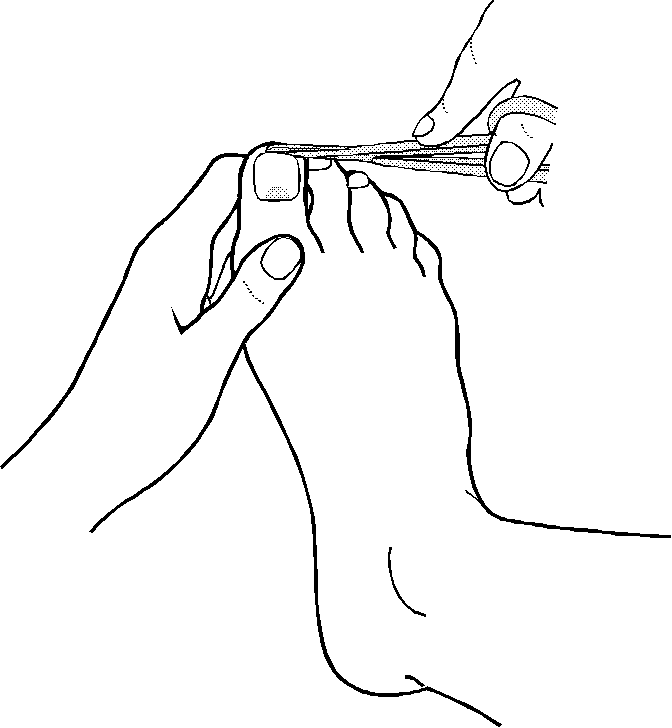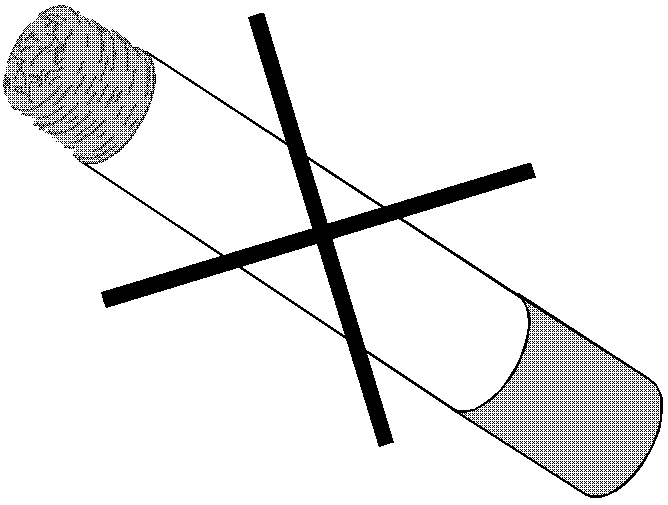
 |
| A few minutes a day looking after your feet can prevent a
lot of problems in the future. How are foot problems caused?Diabetes can lead to nerve damage in the feet and legs, resulting in a loss of sensation. Any trauma or injury to the foot (e.g. a tight shoe causing blisters) may not be felt and could lead to more severe problems such as ulceration. Diabetes can lead to a restricted blood supply to the feet and legs, resulting in cold painful feet. Because of this, injuries to the feet may be slow to heal and can quickly become infected. |
Examine your feetDamaged skin can lead to infection. Look at your feet closely to check for cuts and scratches, swellings and inflammation or discolouration. If you can't see too well ask someone else to do this for you. |
|
| Feeling your feet will also help find lumps, swellings and hot or cold spots. Rinse any cut or scratch with water and apply a dressing. Contact your Podiatrist or Doctor. |  |
Wash your feet oftenIt is important to wash and examine your feet every day. Use lukewarm water and mild soap. Dry them well but gently. Don't forget to dry between your toes. Use moisturising cream to keep your skin soft and supple but don't apply this cream between your toes or it may make the skin too moist. |

|
Avoid burning your feetLike many people who are diabetic you may not be able to feel heat, cold or pain very well in your feet. You must take certain precautions because of this. Take care not to burn yourself on a hot-water bottle for instance. |
|
| If you use an electric blanket, remember to switch it off before going to sleep. Don't put your feet too near a fire or against a radiator. Check the temperature of the bath water using your elbow before stepping into it. |  |
Toe nailsToenails should usually be cut straight across. Don't cut or probe down the sides of your nails. If you have reduced feeling or circulation in your feet, it will be safer to leave this to your Podiatrist. Ask for advice. |

|
Corns and callousCorns and callous should be dealt with by your Podiatrist. Don't try to cut them yourself and don't use corn remedies. |
Check your footwear regularlyShoes should be a good fit, preferably lace-ups, with soft uppers and roomy
at the toes. This will allow your foot muscles to work properly and prevent
rubbing. When buying shoes, always ask for your feet to be measured. Wear new
shoes just for an hour or two at first. Always change into clean socks or
stockings which fit well. |
|
| Always change into clean socks or stockings which
fit well. Examine your shoes, socks and stockings for damage each time before putting them on. Cracks, small stones and nails can irritate and damage your skin. |

|
Don't smokeSmoking can worsen circulatory problems. Ask for advice and leaflets at your health centre on how to stop smoking . For further details of local stop smoking clinics contact your local Health Promotion Unit. |
 |
|
Designed by Richard
Hourston Illustrations by Jane Fallows |
[PREVIOUS]
|
| Home
| Leaflets | Footcare | Footwear | Hosiery | Casting | Sensory testing | Monofilaments | Circulation tests | St.Vincent
Declaration
| Links | Disclaimer | About |Contact Website www.diabeticfoot.org.uk
created and maintained by Richard Hourston, |